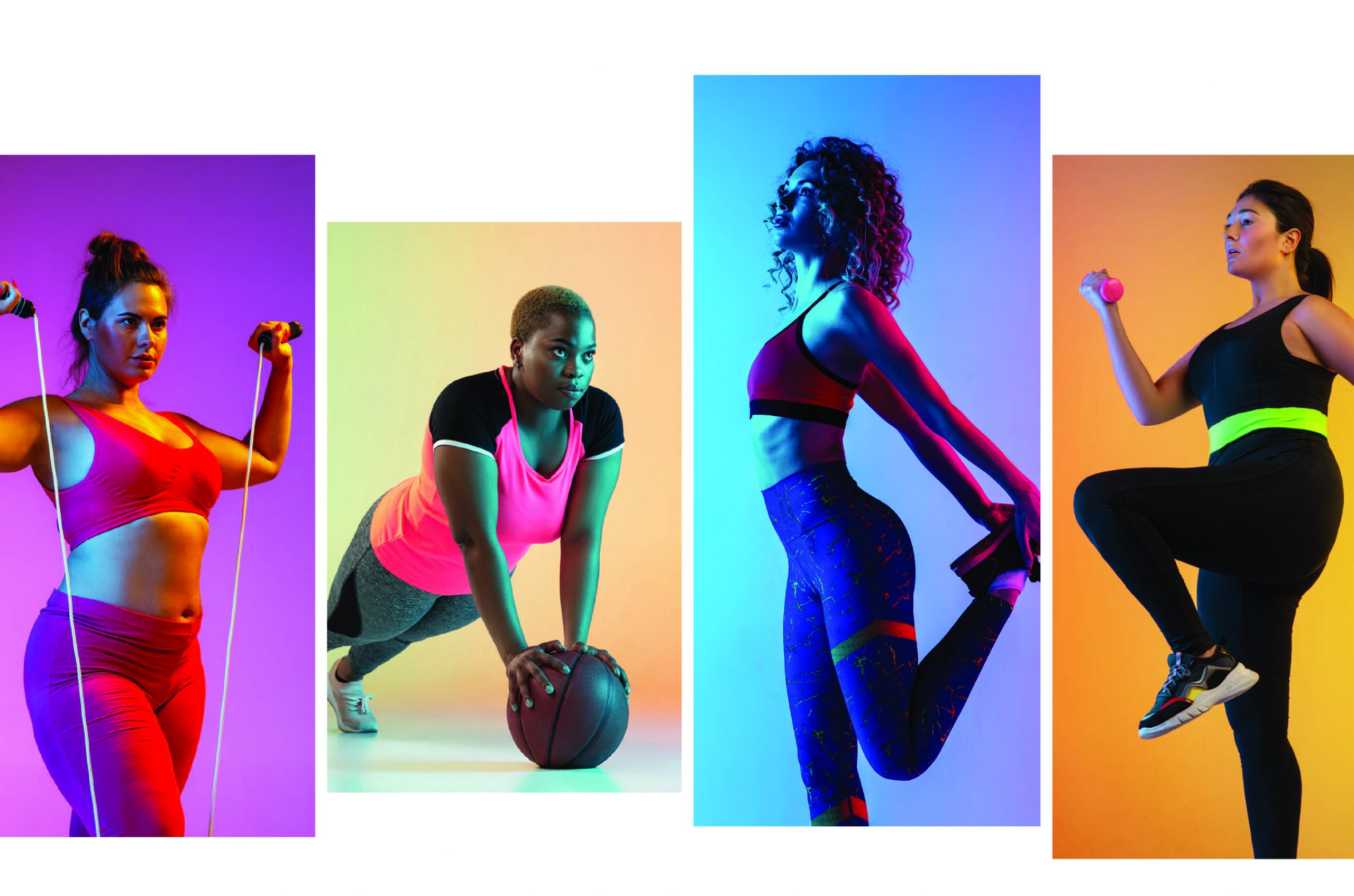Research shows that exercise benefits the body’s organs and tissues no matter what your age or gender. But some recommendations are a bit more specific to women, especially in terms of bone and muscle health, says Amy Lescher, R.N., fitness director for TruFusion STL.
“Weight-bearing exercise and resistance training are what women need for good bone density and healthy lean muscle mass,” Lescher says. “What many people don’t realize is that their exercise doesn’t have to be heavy or intense to be effective. Walking, jogging and using dumbbells and resistance bands can help your bones, muscles, tendons, ligaments and cartilage stay healthy. Being in motion helps keep your body in proper working order, just like a machine.”
Lescher says that because many women have been working from home in the past year, they may be missing out on their usual exercise time, so it helps to choose activities that accomplish multiple objectives. “Take the dog out for a brisk walk every day,” she says. “Play yard games with the kids, or get some gardening done; just remember to stay active. Cutting the grass, mulching the yard and shoveling dirt are all forms of resistance training! It’s actually possible to exercise without even feeling like you are.”
She emphasizes that the type of exercise you choose doesn’t have to be complex or grand, just regular. “We live in a city where the weather is fairly manageable most of the year, so there aren’t many excuses not to get out and move,” she says. “The St. Louis area is full of parks and green spaces, and many neighborhoods have made sidewalk and bike lane improvements so you can easily walk or ride.”
If you need help getting or staying motivated to exercise, joining a gym and engaging a personal trainer are always good options, she notes. “A woman’s physiology constantly changes as she ages,” Lescher says. “Muscle and bone mass decline with time, and hormonal changes can contribute to conditions like osteoporosis. As you get older, it becomes harder to stay lean and keep healthy muscle mass if you’re not there already. A good fitness professional can help you understand what exercises work well at your stage of life.”
She suggests purchasing a set of resistance bands as a good home workout option. “You can do many different kinds of exercises with them,” she says. “You can anchor them in a doorway or on a bedpost, or you can use them for pushups and other exercises. They are very versatile.” She also recommends using light dumbbells to build arm strength. “They come in weights like 5, 8 or 10 pounds, and some are even weight-adjustable,” she says.
Lescher says she often uses analogies to explain how the body and its tissues degenerate and wither away if you don’t stay active. “Think of it like a piece of fruit or a vegetable that you bring home from the market and leave on a counter unused,” she says. “It looks good at first, but then it starts to shrivel, and the same thing happens to your muscles when you don’t use them. Eventually, your bone density decreases as well.”
Brian Cygan, CEO and cofounder of The Exercise Coach, says that the more muscle mass declines, the harder it may be to get it back, so it’s important to take action to maintain it. “When you are between the ages of 50 and 60, you lose about 1.5% of your muscle mass each year, and after age 60, it increases to 3% per year,” he says. “The body starts to prune muscle fibers and groups of muscles so that the brain can no longer access them, but strength training can help reverse that process.” Research shows that if a person in her 60s or 70s keeps to a science-based strength training program, she actually can end up on par with the muscle mass of a person in her 30s or 40s, he says.
Cygan adds that weight and strength training also help prevent other ripple effects on your health. “Muscle mass is the window to other systems in your body, and it is tied to your cardiovascular, hormonal and skeletal health,” he notes. “When that mass declines, you also lose dexterity and balance and become more prone to falls, fractures and other injuries.”
He explains that it’s important to make exercise a positive experience by focusing on physical and mental wellness. “Everyone hears how important fitness is to good health, but many adults have had experiences leading them to believe exercise is not for them, whether it’s lack of time, physical limitations, fear of injury or disappointing past results,” he says. “We encourage women and men to remember that no matter their current state of fitness, there is a science-based weight and strength training program that can provide a safe on-ramp to better health. Exercise actually can reverse the effects of aging, and it doesn’t have to take a lot of time.”
did you know?
- It’s recommended that adults get at least 150 minutes of moderate-intensity aerobic exercise each week.
- Breaking up exercise into 30-minute sessions five days a week can help make fitness goals more attainable.
- Exercise could help lengthen your life! People who stay physically active and maintain a healthy weight live an average of seven years longer.
what does exercise do for your body and mind?
- Jump-starts your energy level so you can accomplish more
- Helps you alleviate tension and stress
- Encourages a positive outlook and attitude
- Helps you sleep better
- Gives your self-confidence a boost
- Helps you quit negative habits like smoking
- May help lessen symptoms or severity of some health conditions
- Gets you outside in the fresh air
Source: American Heart Association








